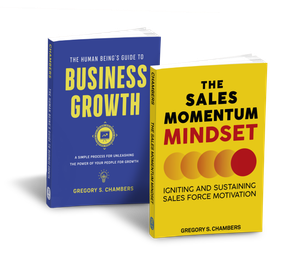It’s Not You, It’s Me – Surviving Client Transitions
"We've decided to hire another firm." Are there scarier words in a service-driven business? Especially a CPA firm where clients can take years to decide to hire you in the first place. There are multiple issues that impact client retention, but today I want to focus on one. The transitioning of a client between a senior partner and an associate.
From the point of view of the partner, a call like this from a past client, or worse, finding out second-hand that a client you worked with for years is leaving your firm, is maddening. "I mean, if this associate can't take care of that client and can't keep them happy, how can they be trusted with a larger book of my business?" thinks the partner.
From the point of view of the associate, inheriting a partner's accounts is a mixed blessing at best. They may have a working relationship with the client; but if there were issues, the partner handled them. The best relationships are forged in fire and they never got the chance to play with the flame. The associate doesn't get origination credit and worse, if anything goes wrong with the account, it's all their fault.
From the client's point of view, a call from a partner, or worse, a call from a new associate telling them there's a change in account management re-frames everything. The fees clients pay to CPAs may be a small percentage of overall revenue, but the sensitive nature of the relationship sets off alarm bells and the fight-or-flight mechanism kicks in. Change is a threat.
This playing field encourages partners to hold on to accounts for too long, prevents associates from developing relationships, and is one reason why clients never contemplate change. It's a sub-optimal situation. To remedy this, we have three ideas used with growing CPA firms that help partners let go of small accounts to develop larger accounts, ideas that help associates delight and amaze inherited accounts, all while delighting clients and minimizing attrition. The ideas are Perspective Check, Empathic not Telepathic, and Becoming the Future.
Perspective Check
The first idea is to figure out the scope of problem with a perspective check. Years ago, I was responsible for a computer training center with over 100 new students a day coming through the facility. One day, an instructor came to my office with the training manager in tow. They were trying to solve a persistent complaint from the instructor crew: how to handle the deluge of student questions outside the scope of the course. We came up with a workable solution, but there was a nagging question about frequency. Like, how often does this happen? Neither the instructor nor the manager had an answer. We ran between 8-12 classes a day, so it must be happening 8-12 times a day? No, definitely not. Once a week? Not really.
Here’s what I came to understand. Instructors, especially newer ones, have to deal with the fear of knowing they aren't experts and worry about getting questions that made them look dumb. It rarely happened, but when it did, it was traumatic. They needed tools to deal with the event, but we all needed some perspective on how many times classes went well.
Handing over clients to associates is similar, but in addition to embarrassment, there is a financial consequence at stake. It's not uncommon for me to hear "our people don't get it, why just today…" and then when questioned, the evidence is that 49 clients are happy and only one is a mess. We can deal with that and eliminate future problems, but it helps to have a perspective check.
Empathic not Telepathic
Empathy is defined as the ability to understand the feelings of another. When it comes to clients, especially inherited clients, we want our associates to build an empathetic bond with clients that our partners already feel empathy with. We want them to understand the client’s situations, but most firms transfer this information with "let me summarize 6 years with this client,” which at best, is a form of telepathy. There are better ways to build understanding based on a radical concept I call, Getting the What from the Who. The way to help associates get a feel for who our clients are and what they expect from the firm, is for the associate to spend some directed time with the client. We have a lot of exercises useful for this purpose, but the best ones are variations of workshop icebreakers. I'll give you two possibilities.
One exercise is a variation of a “turn to your neighbor, learn about them and then turn to your other neighbor and tell them what you learned about your new contact,” exercise. In this case, ask your associate to get out and sit with their new client, get to know a few things, and report what they learned. It takes time to schedule the client visit and the partner follow up but compared to the time it takes to rescue a client, it’s a shortcut to empathy.
A second exercise is a variation of those "make a connection" icebreakers, where you are instructed to match the people you meet with others in the room sharing the same characteristics. In this case, instruct your associate to meet with the new client, learn about them, and based on that information make an introduction to someone in the associate’s network. This could be a business contact, finding an employee, or even a sport or recreation connection. It works because it forces your people to do something meaningful for the client without charging them for it.
Armed with these two ideas your associates can set up a time with clients and immediately get insights into who their inherited clients are and how the clients feel about the firm. It's the fastest way to build empathy without guessing and gets everyone comfortable with change.
Becoming the Future
The last idea to consider is a business development technique that gets the client to open up, gets the associate bought into the client's plan, and creates numerous opportunities. I put it last because it's also an easy way to get off track and into long meandering conversations that leave both parties shaking their heads, thinking "that felt good, but what are we supposed to do with this?" It's a simple idea to execute. The associate needs to get in front of the client and ask a variation of, "Client, tell me about where you see yourself in the next 4-5 years. Pretend that we just tripped over success today, talk to me about what it looks like."
It's a straightforward conversation but it can run wild because a lot of what comes out of the client's mouth will not be related to the work your associates do. At the same time, that's the beauty of having such conversations. The future is yet to be written and if we want our associates to bond with inherited clients, to develop a strong sense of empathy, and to be as committed to the client as we are, it helps if they know what the client is working toward, how the client defines success, and where the client might need help in the future.
These ideas, applied over time, will help your firm overcome its biggest growth challenge, getting senior partners to develop new business, because it frees up time for partners to look for new business while giving promising associates more responsibility. It will always hurt to hear that a client is taking their business elsewhere, but these ideas will give your clients a burst of new energy which aids in retention, uncovers opportunities, and generates referrals which minimizes the sting, just a little.
(this article originally appeared in Insightful Accountant)




